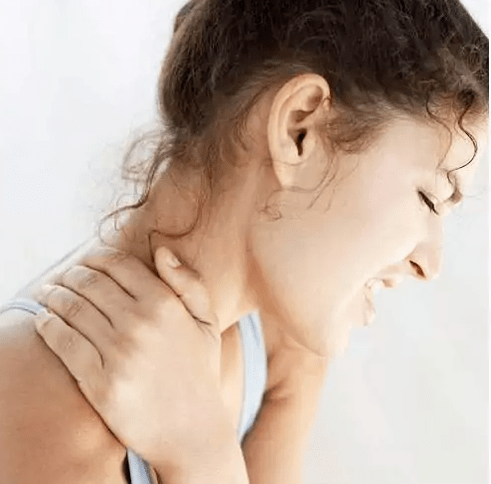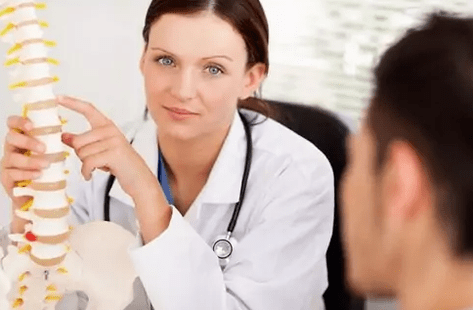Another serious illness of our time was osteochondrosis.The first signs can appear in the youth, when it comes, by sitting on the computer or on the notebook, suddenly, at first, it starts to become uncomfortable, then pain in the seventh cervical vertebra.Soon the pain became such that it was difficult to turn the head or "tears" from the pillow.After a few days, the severity usually passes, and before the next attack can pass a few months, maybe the year.However, don't be satisfied!The first attack is a serious warning that the mechanism of dystrophic changes in your body has been launched.To understand this, let's think about what osteochondrosis is and why you need to start treating it from the first symptoms.

What is osteochondrosis?
Osteochondrosis is a complex dystrophic change in the spine where the stage can be distinguished:
- Dystrophic changes in the cartilage of the intervertebral disc, resulting in controlled movement and causing discomfort (Level I)
- Drink deformation and gradually decrease in intervertebral distance (stage II).
- The formation of intervertebral hernia (stage III)
- The formation of spikes (osteophytes) and ligaments ossification, making movement very difficult and painful (stage IV)
The formation of hernia is a complex process in which the entire part is focused.However, now you should know that serious illness occurs if osteochondrosis is not treated in time.Therefore, so that you have an idea of what the hernia is, we will say in two words about it.To do this, you need to switch to anatomy again for a while, and remember the spinal and spinal disc device.
The spinal disc disk leads to the weakness of the fibrous ring and the displacement of the main shock absorber (nucleus), as a result of the formation of bulge (protrusion), or so-called "pre-jiszh", occurs.Then, under the influence of the load, there is slowly rupture of the ring and the output of the nucleus outside the disc - the hernia itself forms directly, which causes severe pain when the radicular nerve is damaged.
To identify the presence of osteochondrosis, especially in the early stages, when curvature does not provide clear external signs, also determines its orientation and degree, it is necessary to create magnetic resonance imaging.This diagnostic method does not cause any harm to human health, unlike X -Ray, also allows you to determine exactly the angle of deviation.Based on the description of radiological and MRI images, experts build the right treatment plan for the patient, which, of course, is the strengthening of the muscle corset.
When choosing a clinic to undergo an exam MRI, it is necessary, first of all, to review the power of the equipment used and the eligibility of the clinic worker.
Spinal osteochondrosis type
Osteochondrosis can be several types:
- Cervix is the most common, as young and old
- Thoracic - relatively rare
- Lumbar - develops after 40 years
- Sacral - usually turning from lumbar
- Normal - affects several departments or even the whole spine
In the same order, the spontaneous development of the disease often occurs: starting with the upper cervical vertebra and ending with sacral and coccygeal.
But it happens that the type of osteochondrosis is associated with human activity.Therefore, the cervix is usually common among students, designers and all other "brain profession" representatives, where the neck for a long time is in constant tense.Physical laborers, atheethoids from youth can have lumbar osteochondrosis, taxi drivers, shoe makers and other "sitting" specialty-specials coupled with lumbar with cervix-overall sets!Hard osteochondrosis is also often observed in the vete, which is almost all day on its feet, as it is a sacrum that holds our body in a upright position, and the whole load falls on it during the process of standing or walking
The cause of the appearance and development of osteochondrosis
However, osteochondrosis is not just an inactive lifestyle disease, improper posture or weight loss.There are many other factors and reasons for the origin of the disease.I will only highlight the main one:
- Incorrect nutrition with inadequate amounts of protein and increased sugar and fat
- Breaking the metabolism and hormone imbalance
- Contagious
- Hypothermia
- High weight and obesity
- Spinal injury
- Bone degeneration
- Hereditary
- Stress
The main symptom of osteochondrosis
Cervical osteochondrosis:
- Pain in the neck and on the head (can give under the shoulder blade, to the sternum and hands)
- Dizzy, especially when changing position on the head
- Numbness in the neck area, face, tongue, submarine area
Thoracic osteochondrosis:
- Thoracic pain that can be intensified on inhalation and when moving
- The sensation of numbness in the chest
Lumbar-cross:
- Pain in the lower back (acute or acute), which gives to the feet, and the localization of pain in the legs can move throughout the entire limbs
- Legs (violations or loss of sensitivity)

Pain for osteochondrosis is a specific neurology.Therefore, headache, dizziness, numbness or legs in the legs tend to take as a direct manifestation of head or foot disease, although this can be a symptom of vertebral osteochondrosis.Therefore, if you see something anxious in your well-being, in line with the signs listed, be sure to visit a neuropathologist.The doctor, who has been examined, with the suspicion of the disease, will surely prescribe the X -ray exam.
The main method of treatment of osteochondrosis
The most effective removal of back pain:
- Therapeutic gymnastics (training for back pain)
- Mls laser (after the 2nd session, pain passed)
- Hivamat (unique procedure that relieves pain immediately, but we must be the same as 2-3 times.)
The elimination of the development of osteochondrosis is a major method of treatment and prevention.
Preventive treatment and not -dur
This is first of all:
- Lifestyle and active (mobile) lifestyle
- Normal nutrition with a protein diet does not include fat and sugar
- Medical Physical Education (Training Therapy) with a set of individually selected exercises for each type of osteochondrosis
- Physiotherapy (magnetot therapy, ultrasound treatment, electrophoresis, laser therapy)
- Massage, manual and reflexology
However, such conservative treatment methods are suitable for prevention, to prevent the development of osteochondrosis and not during the active period of the disease.But how to treat the disease, if launched, the manifestation is clear and one has a severity level, namely: accurate:
- pain and high temperature
- limited, given with great difficulty, movement
In this case, exercise and physiotherapy therapy is said to be contraindicated and exclusive drug methods are used.
The method of treatment of drugs
First of all, you need to stop the pain and relieve the inflammation process in the nerve spine, irritated.For this purpose, they are appointed:
- not anti -inflammation (NSAIDs);Corticosteroids, Glucocorticoids IDR.(They are set if NSAID operations are not enough)
- novocaine blockade (with severe pain)
- preparation to remove muscle cramps;
- painkillers, gels and creams;
The second phase of treatment includes:
- The use of vasodilator: osteochondrosis is always adjacent to blood vessels and brain oxygen starvation (hence headache and dizziness)
- Appointment of funds that calm the nervous system: patients with the disease are constantly alarming and suspicious, in most cases they are very afraid of the first attack of the disease.
- Treatment of joint phenomena - this can be hypertension and a violation of heart activity
- Treatment must be prescribed to you a neuropathologist, in the form of dropper, injection and tablet
Don't try to treat the disease itself!
At the end of the acute period and the normalization of well -being, return to non -prominent preventive treatment methods: training therapy, massage and physiotherapy if there is no contraindication for them.
Health to you!


























